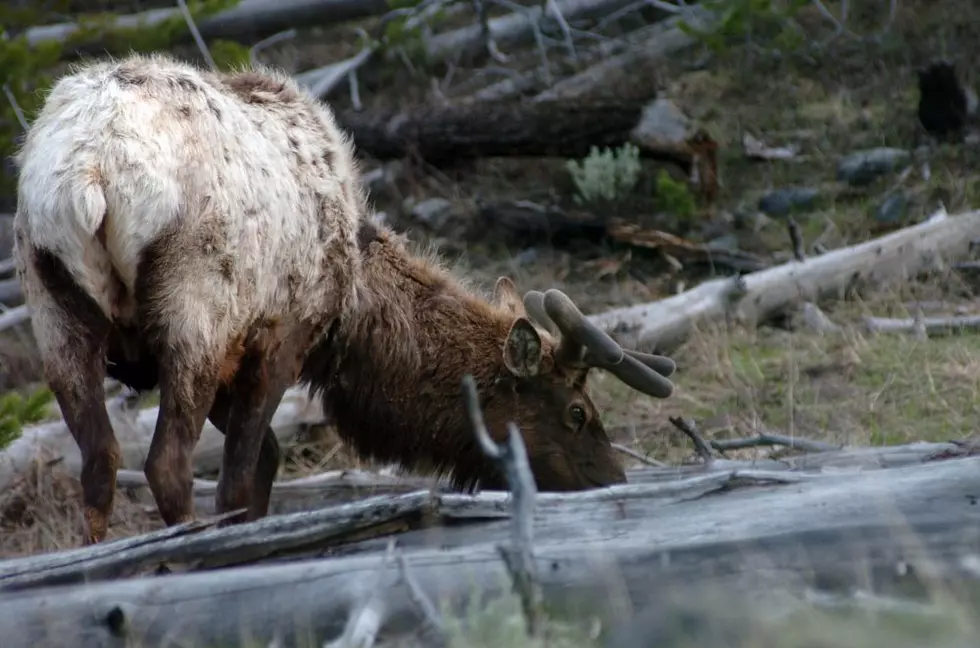
FWP director proposes changes to elk shoulder seasons for public land
Contrary to initial promises made a handful of years ago, Montana Fish, Wildlife & Parks is making changes to normalize extended elk hunting seasons that didn’t exist before 2016.
Earlier this week, FWP wildlife managers were told in an email that FWP Director Hank Worsech was moving away from the elk shoulder season concept and associated performance criteria. As part of that, he is purging the term “elk shoulder seasons” in favor of “early” and “late” antlerless elk seasons.
Hunting during shoulder seasons was previously limited to private land because much of the overpopulation problem is caused by elk harboring on private land where most hunters can’t get to them during the regular season.
However, now FWP will propose that both public and private lands can be used during early and late seasons, partly because the FWP commission has expressed a leaning in that direction, according to the email. Finally, instead of extending until Feb. 15 as it has for the past few years, the late season would be shortened to just three weeks after the general season ends on Thanksgiving weekend.
The email told FWP supervisors to go into the department database no later than Friday this week and make the changes.
After learning of this recent manipulation, some hunters saw the rebranding as possible evidence of the department going further back on its word.
“The public deserves to understand both the objectives and the parameters monitored to gauge success of specific hunting regulations. Elk shoulder seasons were developed in that fashion and then hijacked in their implementation. That trend continues with the latest top-down directive to rename these seasons but add no detail,” said Jeff Herbert of the Montana Sportsmen Association. “While shortening the length of the late season to three weeks is an improvement, adding public land to the mix is irresponsible when the issue is largely one of over abundant elk on private land.”
Many hunters object to the continuation of shoulder seasons under any name, because they say the seasons don’t work and that FWP instituted the seasons in 2015 under somewhat false pretenses. What was supposed to be a three-year trial starting in 2016 has turned into a permanent situation, even though some criteria weren’t met.
FWP promised to hold shoulder seasons for three years, after which it would evaluate performance criteria. If the shoulder seasons didn’t meet the criteria, they’d be discontinued.
Prior to 2016, hunters opposed the trial project for several reasons. They pointed out that Montana already had shoulder seasons prior to 2005, after which they were eliminated because they weren’t effective.
Part of the reason is if landowners don’t allow hunters on their land, that’s where the elk go to hide, regardless of how long the season runs. Retired FWP biologist Ken Hamlin did research on shoulder seasons prior to 2005 and found that elk populations can only be effectively reduced when many hunters have access to the majority of a district. If they can access only small chunks of public land, the elk learn to move to private land where they’re safe.
Plus, hunters suspect that some landowners harbor elk during the regular season to offer expensive outfitted hunts, profiting from public wildlife, and then expect resident hunters to come in later to reduce the population.
In 2016, FWP agreed to limit shoulder seasons to cow elk and promised it would monitor elk numbers and hunter success in districts that got shoulder seasons. One requirement was that rifle and bow hunters should kill enough cow elk during the regular season to equal half the female offspring born that year in the district, otherwise that district’s shoulder season would be closed.
In 2015, then-Wildlife Management Chief Quentin Kujala said the criteria was designed to encourage landowners to allow hunter access during the regular season, because hunters couldn’t kill enough elk without private access.
By the end of 2018, the three-years’ of results showed half of the 42 hunting district failed to meet the performance criteria related to cow elk, often because not enough landowners allowed access. That’s important because reducing the number of cows is what brings down a population.
But now, two years after the results were tabulated, the shoulder seasons still remain. And now they’re being extended to public land, something hunters opposed in 2015 because it lets private landowners off the hook so elk aren’t moved around any more than in the regular season.
When asked why the department was making the changes, FWP spokesman Greg Lemon said in an emailed response that it was a proposal for the FWP commission would consider during season setting meeting on Dec. 14. If the commission decides to move it forward, hunters would have opportunity to comment, Lemon said.
“With this proposal to extend antlerless opportunities on both private and public land, we think we’ll see increased harvest opportunities and see more elk harvest in areas that are over objective,” Lemon wrote.
Lemon said FWP would continue to do harvest surveys to track whether or not the potential changes would result in more elk harvested in areas where populations are over objective. But he provided no answer to the question of if or how the department would measure success or if shoulder seasons would be eliminated if they proved once again to be ineffective.
Contact reporter Laura Lundquist at lundquist@missoulacurrent.com
